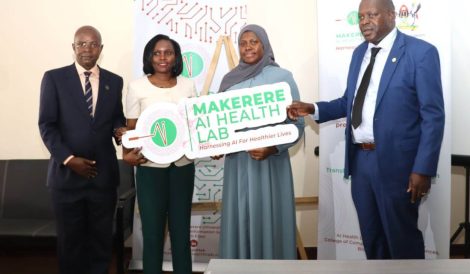AI Tool to Revolutionize Malaria Diagnosis in Uganda: A Leap Toward Faster, More Accurate Detection
The integration of artificial intelligence (AI) in malaria diagnosis could significantly reduce testing times and improve diagnostic accuracy, especially in remote Ugandan health facilities. This was highlighted by Dr. Andama Fred, Chief Laboratory Technician with the Ocular Project and a leading TB diagnostics expert at Mulago National Referral Hospital, during a webinar co-hosted by the Mak AI Health Lab and Malaria Consortium to mark World Malaria Day 2025.
Under its flagship Ocular Project, the Makerere University AI Health Lab has developed AI tools that can deliver malaria diagnostic results in under 60 seconds. This is a major improvement compared to Rapid Diagnostic Tests (RDTs), which take around 15 minutes, and the gold standard microscopy, which takes 25 to 30 minutes.
Dr. Andama outlined the development phases of the AI tools and their field testing across Uganda. He noted that Uganda’s health system faces a shortage of qualified laboratory technologists, particularly in rural areas, which hampers effective malaria diagnosis. AI, he said, offers a promising solution to fill this gap.
A 2020 study by Chawanuka and colleagues revealed that nearly 50% of lab technologists were absent from their posts, and many lower-level health centers relied on lab assistants who lacked formal qualifications. “Many facilities rely on lab assistants instead of qualified technologists to conduct diagnoses,” Dr. Andama said. “This inconsistency can affect the quality of malaria diagnostics.”
The Ocular system addresses this challenge by leveraging the widespread availability of smartphones among technicians. Using a 3D-printed adapter, the AI tool connects a smartphone to a microscope, allowing it to capture and analyze high-resolution images of blood smears to detect malaria parasites.
With Plasmodium falciparum accounting for 97% of malaria cases in Uganda, the AI models has been trained specifically to detect this species. However, Dr. Andama emphasized the need to expand its capacity to identify other species and stages of the parasite to ensure adaptability to evolving malaria patterns.
The idea for the tool originated in 2014 at the College of Computing and Information Sciences. With support from the Ministry of Health, researchers have conducted field studies in multiple regions. Despite infrastructure and training challenges, the pilot studies demonstrated strong potential for the tool to improve malaria diagnosis in underserved areas.
Dr. Andama stressed the importance of standardized procedures in smear preparation, staining, and microscopy for the tool to work effectively. “Volunteers, who make up a large part of the lab workforce, often lack sufficient training. This affects diagnostic accuracy,” he explained. “AI has the potential to standardize processes and raise diagnostic consistency.”
Looking ahead, Dr. Andama said that continued feedback from the field would guide the refinement of the tool to ensure it is robust and adaptable to various health facility settings. “We want this tool to be something health workers can rely on every day not just a one-time solution,” he said. “It must evolve with the challenges.”
Despite ongoing hurdles, Dr. Andama remains optimistic about the future of AI in public health. He believes the Ocular project could set a precedent for applying AI in malaria-endemic regions globally. “This partnership and continued collaboration will be crucial as we move forward,” he said, thanking all partners involved in the initiative.
The Ocular tools are still in the testing phase, with hopes for nationwide deployment in the near future. If successful, the technology could transform malaria diagnosis and serve as a model for disease control efforts across Africa and beyond.
END

